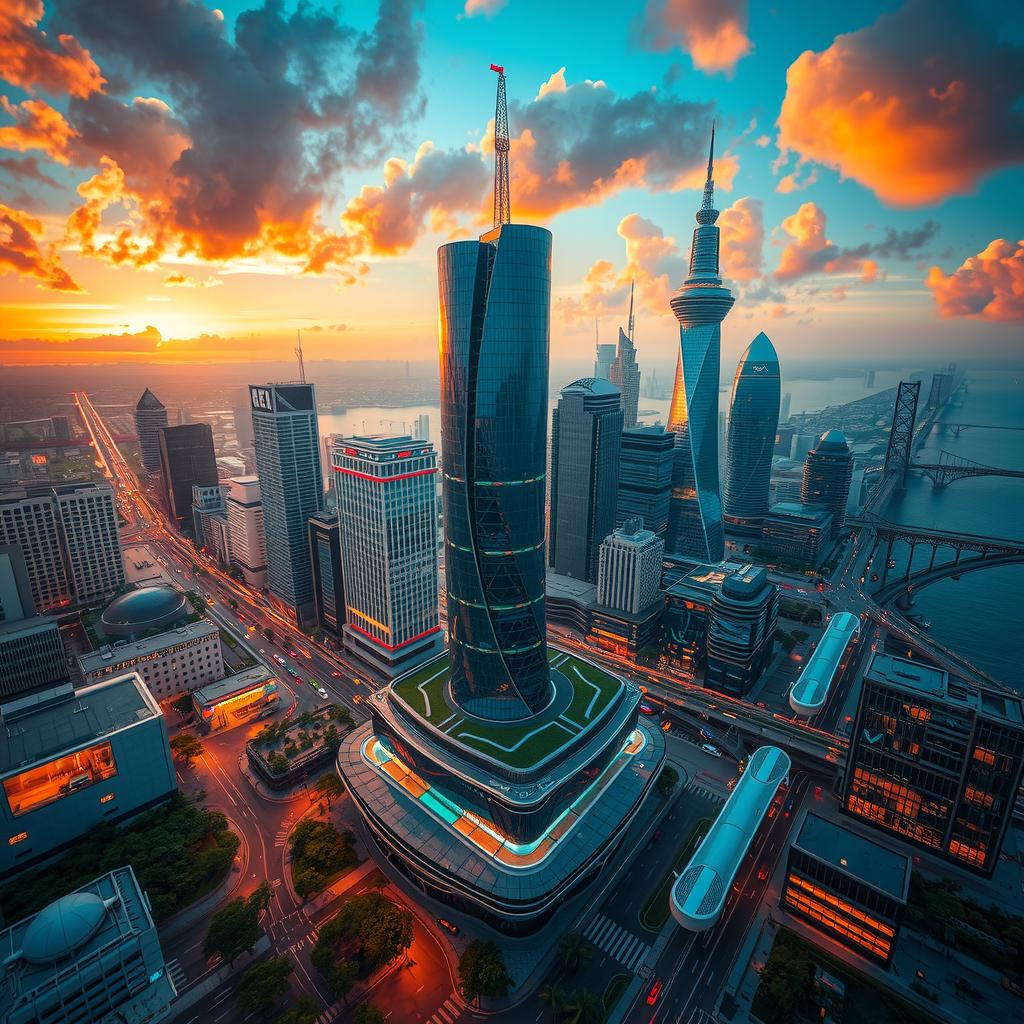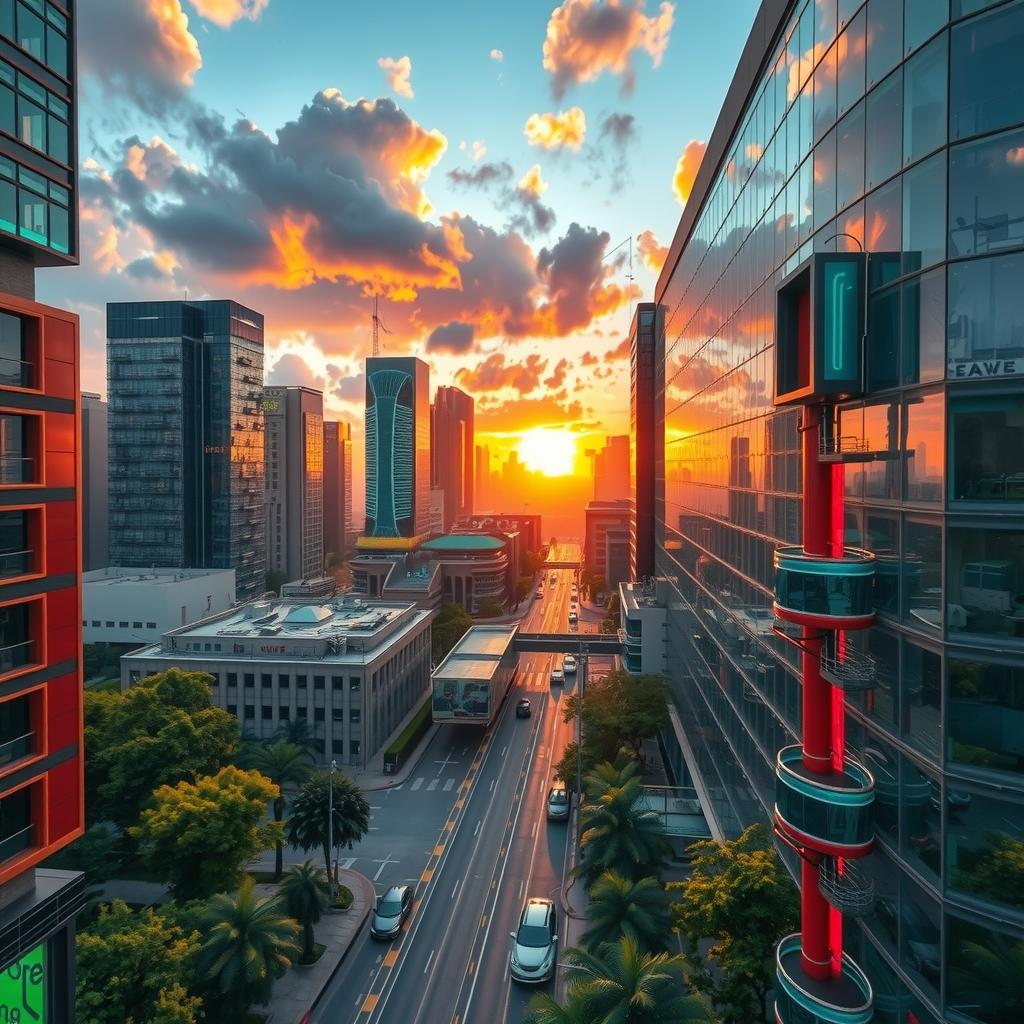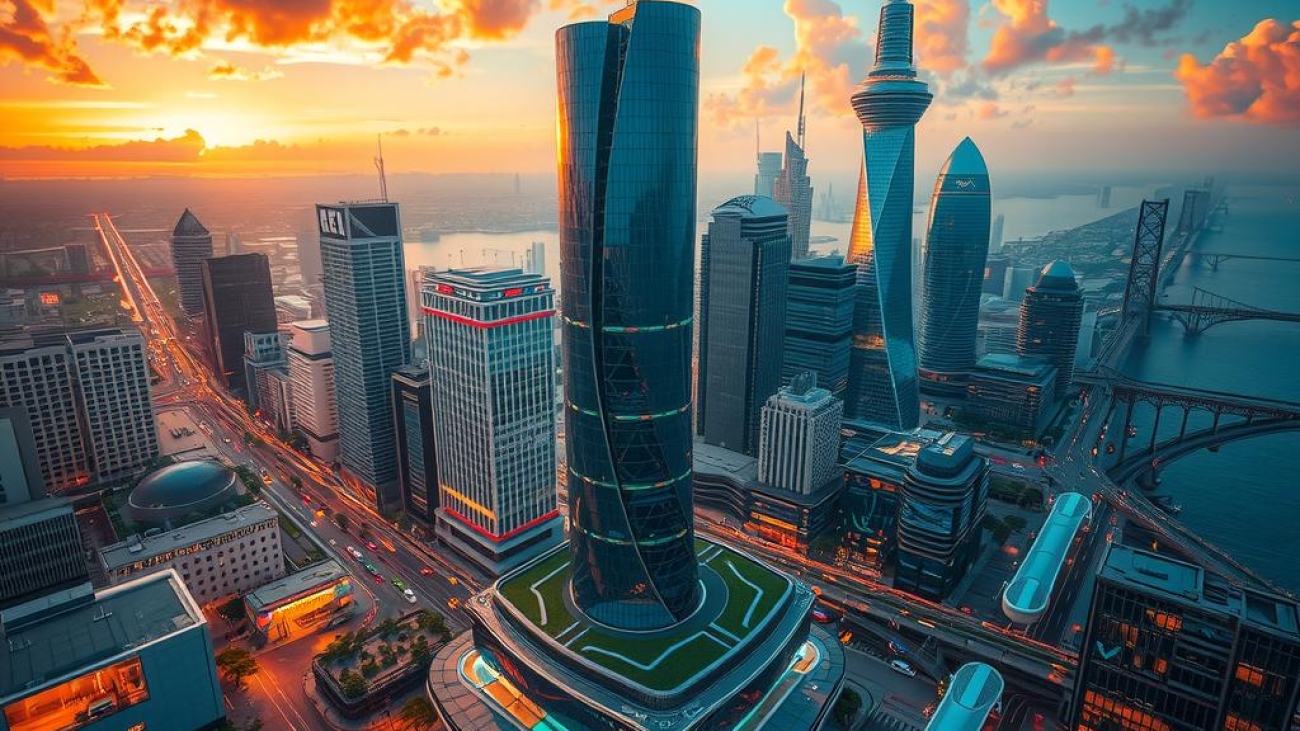In recent years, the intersection of technology and creativity has given rise to innovative tools that redefine the boundaries of artistic expression. Among these groundbreaking advancements is Generative Adversarial Networks, commonly known as GANs. This sophisticated framework harnesses the power of machine learning for artists, enabling them to explore uncharted territories in art creation. At its core, Generative Adversarial Networks consists of two neural networks—the generator and the discriminator—that engage in a unique adversarial game. This architecture not only facilitates an impressive ability to synthesize images but also transforms traditional methods by introducing an element of unpredictability that often leads to astonishing results.
Understanding how Generative Adversarial Networks operate requires delving into their complex architecture. The generator crafts new data instances while the discriminator evaluates their authenticity against real-world examples. This dynamic training process fuels continuous improvement in both networks, resulting in progressively more realistic outputs over time. Artists can leverage this advancement through various applications, such as creating intricate digital paintings or even generating handwritten digits with remarkable accuracy. The abilities provided by Generative Adversarial Networks extend beyond mere replication; they offer creators a way to generate entirely novel works that blend human creativity with computational prowess.
For those eager to navigate this exciting realm, implementing a simple GAN serves as an excellent starting point for understanding its potential impacts on art and design fields alike. A step-by-step guide to GANs can equip aspiring digital artists with essential knowledge about tuning parameters and optimizing performance during training phases—skills crucial for maximizing creative output from AI systems. As artists begin integrating AI into their workflows, it becomes evident that Generative Adversarial Networks are not just tools but collaborators capable of pushing artistic boundaries further than ever imagined.
The advent of AI in art creation presents both opportunities and challenges within creative industries; however, it is clear that frameworks like Generative Adversarial Networks hold significant promise for reshaping how we approach artistic endeavors today and into the future. With each iteration produced through these algorithms reflecting distinct styles or themes influenced by vast datasets fed into them during training processes, there lies immense potential for exploration across diverse genres—from abstract forms reminiscent of classical painting styles to modern interpretations reflective of contemporary trends shaped by societal shifts.
As curiosity ignites among professionals seeking innovative techniques alongside traditional methodologies within their practice areas—including visual arts and architecture—the role played by technologies like Generative Adversarial Networks becomes increasingly pivotal—not merely augmenting existing skills but redefining what it means to be an artist in the age where machines actively contribute towards enriching cultural narratives through generatively crafted content.

Key Points:
-
Title of the key point: Understanding the Architecture of GANs
The architecture of Generative Adversarial Networks plays a crucial role in their functionality and effectiveness. Comprised of two neural networks—the generator and the discriminator—these components work in tandem to produce innovative outputs. The generator crafts new data instances, while the discriminator evaluates them against real-world data, providing feedback that refines the generator’s capabilities. This interplay forms a competitive learning environment that is fundamental to creating art with AI, allowing artists and technologists alike to explore unprecedented creative avenues. -
Title of the key point: Exploring the Training Process of GANs
The training process for Generative Adversarial Networks is intricate yet essential for achieving high-quality generative outcomes. It involves iterative cycles where both networks compete against each other; as one improves, so must the other adapt to maintain its performance level. Through this continuous feedback loop, artists can witness how machine learning transforms into tangible artistic expressions. A comprehensive understanding of this training process empowers users to harness AI in art creation, pushing boundaries far beyond traditional methods. -
Title of the key point: Implementing a Simple GAN for Generating Handwritten Digits
For those looking to delve into practical applications, implementing a simple GAN provides an ideal starting point for generating handwritten digits. By following a carefully crafted step-by-step guide to GANs, practitioners can gain hands-on experience with this cutting-edge technology. This implementation not only highlights how Generative Adversarial Networks function but also serves as an educational tool that bridges theoretical knowledge with real-world application in machine learning for artists.

The Intersection of Technology and Art
How Generative Adversarial Networks are Transforming Artistic Landscapes
The rise of Generative Adversarial Networks (GANs) has introduced a new paradigm in the realm of artistic expression, enabling artists to explore uncharted territories through the lens of technology. At its core, this innovative technique involves two neural networks—the generator and the discriminator—working in tandem to create art that can rival human creativity. This architecture of GANs not only facilitates the generation of visually striking images but also encourages a dialogue between man-made artistry and machine learning for artists. As these networks undergo their training process, they learn from vast datasets, which allows them to produce unique outputs based on existing styles and forms while pushing boundaries beyond traditional methods.
The application of GANs extends across various creative domains—from painting to music composition—and has led to an unprecedented exploration into what it means to be an artist in today’s digital age. Artists are increasingly adopting AI technologies as tools for creating art with AI, using them as collaborators rather than replacements. For instance, by implementing a simple GAN model, one can generate stunning visual artworks or even create variations on classic masterpieces. This democratization of art creation empowers creators with diverse backgrounds and skill levels who may not have had access to conventional artistic training.
Moreover, one fascinating application involves generating handwritten digits using GANs, showcasing their potential far beyond mere aesthetic value; they reveal insights into pattern recognition and data representation that is crucial for both fields such as computer vision and fine arts alike. A step-by-step guide to GANs reveals how aspiring artists can engage with this technology: starting from understanding their basic components—the generator’s role in producing images versus the discriminator’s function in evaluating them—artists find themselves at a crossroads where technical skills meet creative intuition.
As more practitioners delve into AI in art creation, discussions surrounding authorship emerge alongside ethical considerations regarding originality and ownership within generative works produced by machines. While some purists argue against integrating technology within traditional frameworks, many forward-thinking creators welcome these innovations as catalysts for new ideas that challenge established norms about aesthetics.
In essence, Generative Adversarial Networks are reshaping artistic landscapes by forging connections between creativity and computational power. They represent a significant shift towards collaborative efforts between humans and machines—not merely enhancing artistic capabilities but redefining what it means to create art itself in an era driven by technological advancement.

The Architecture of GANs
Exploring the Core Components that Drive Creativity in AI
The Generative Adversarial Networks (GANs) architecture is a fascinating interplay between two neural networks: the generator and the discriminator. This duality allows for a unique collaborative yet adversarial learning process that enables machines to create art with unprecedented complexity. The generator’s primary function is to produce data samples, such as images or artistic representations, while the discriminator evaluates these samples against real-world data to determine authenticity. This dynamic forms a feedback loop where both networks continuously improve their performance—an essential aspect of machine learning for artists seeking innovative tools. As each network learns from its successes and failures, they push each other toward producing increasingly sophisticated outputs.
Understanding the intricacies of this architecture provides insights into how Generative Adversarial Networks can be leveraged effectively in creative domains. The generator typically employs various layers, including convolutional layers designed to manipulate image features progressively until it synthesizes an output indistinguishable from genuine artwork. In contrast, the discriminator uses similar architectural elements but focuses on classification tasks—differentiating real images from generated ones based on learned patterns. This competition not only enhances their individual capabilities but also cultivates an environment ripe for experimentation and innovation in AI art creation.
Training Process of GANs
Delving Into How GANs Learn Through Competition
The training process of Generative Adversarial Networks plays a critical role in their ability to generate high-quality content like realistic images or even abstract artworks. During training, these two neural networks engage in what could be likened to a game; each iteration involves one network attempting to outsmart the other by adjusting its parameters based on feedback received through loss functions specific to its task—generating or classifying data accurately. For instance, implementing a simple GAN model begins with initializing both networks and iteratively training them through epochs where they learn from misclassifications made during previous iterations.
A step-by-step guide to GANs often emphasizes careful tuning of hyperparameters such as learning rates and batch sizes since these can significantly influence convergence rates and overall performance outcomes. Artists interested in using machine learning techniques should also consider experimenting with different architectures tailored toward specific styles or themes when generating handwritten digits or more complex visual compositions within their projects.
Additionally, understanding variations such as Conditional GANs (cGAN) allows creators greater control over outputs by conditioning generation processes upon certain labels or input parameters—a feature highly valuable when creating art reflecting particular themes or narratives through AI-generated imagery.
Implementing GANs: A Practical Approach
A Beginner’s Guide To Generating Art With AI
Implementing Generative Adversarial Networks requires foundational knowledge about deep learning principles coupled with practical steps geared towards achieving desired artistic outcomes efficiently. Beginners are encouraged first to familiarize themselves with fundamental programming concepts before delving into frameworks commonly employed for building models like TensorFlow or PyTorch which facilitate streamlined workflows involving neural network design and optimization strategies.
Generating handwritten digits serves as an excellent entry point into exploring how effective these systems can be at mimicking human-like creativity despite being rooted solely within algorithmic frameworks devoid of emotional context inherent among traditional artists’ methodologies—the result being aesthetically pleasing renditions crafted entirely by artificial intelligence mechanisms guided through rigorous training processes defined earlier.
As practitioners advance beyond rudimentary implementations towards more complex applications encompassing varied forms—from painting styles reminiscent of classical masters’ works down through contemporary digital expressions—they’ll find an expanding array available under broader discussions around AI ethics alongside conversations surrounding ownership rights related specifically concerning digitally created pieces borne out via these intelligent systems engagingly blending technology alongside artistry seamlessly together moving forward into future explorations within this ever-evolving field shaped dynamically around advancements harnessed throughout ongoing research endeavors relating directly back again unto those very same foundational constructs originally established underpinning all aspects involved intrinsically tied back towards initial inception regarding developing robust foundations necessary ensuring success therein navigating realms extending far beyond mere aesthetics found primarily focused strictly upon surface-level interpretations alone!
Introduction to Generative Adversarial Networks in Art Creation
Exploring the Intersection of AI and Artistic Expression
The emergence of Generative Adversarial Networks (GANs) has revolutionized how artists and technologists approach creativity. By leveraging machine learning for artists, GANs provide a powerful framework for generating unique artworks that challenge traditional notions of artistic creation. At the heart of this technology lies its architecture, which consists of two neural networks—the generator and the discriminator—engaged in an adversarial process. This process not only fosters innovation but also enables creators to explore new dimensions in art by synthesizing data from existing works. Through a structured training process, these networks learn patterns and styles inherent in various forms of art, allowing them to produce original pieces that can range from realistic portraits to abstract interpretations.
The Training Process: Building Creative Intelligence
Understanding How GANs Learn Artistic Styles
To effectively implement a simple GAN for artistic endeavors, one must grasp the intricacies involved in the training process of GANs. Initially, a dataset comprising diverse artworks is curated to provide foundational knowledge for the model. As the generator creates images based on random noise inputs, it continuously improves through feedback received from the discriminator—a network tasked with differentiating between real images and those generated artificially. This iterative cycle enhances both networks’ capabilities over time until they reach an equilibrium where generated outputs are nearly indistinguishable from authentic artworks. Such advancements enable artists not only to replicate existing styles but also innovate within their creative practices by fostering new aesthetics through AI-driven techniques such as creating art with AI.
Step-by-Step Implementation: From Conceptualization to Execution
A Practical Guide for Artists Embracing Technology
Implementing a simple GAN requires careful planning and execution tailored specifically toward artistic goals. Following a clear step-by-step guide to GANs can streamline this complex endeavor while maximizing creative potential. Artists should begin by selecting appropriate tools—frameworks like TensorFlow or PyTorch are widely used due to their flexibility and support communities—which facilitate building robust models without extensive programming expertise required upfront. Next comes data preparation; curators must ensure their datasets represent varied styles aligned with desired outcomes—from classical paintings to contemporary digital creations like generating handwritten digits or intricate designs inspired by nature’s patterns.
In conclusion, utilizing Generative Adversarial Networks opens up exciting avenues for creators looking at blending technology with artistry seamlessly while exploring innovative methods previously thought unattainable within conventional frameworks alone.
Frequently Asked Questions:
Q: What are the main components of the architecture of Generative Adversarial Networks?
A: The architecture of Generative Adversarial Networks (GANs) consists primarily of two neural networks, termed the generator and the discriminator. The generator’s role is to create new data instances, while the discriminator evaluates their authenticity against real data. This adversarial process helps both networks improve over time, ultimately leading to high-quality outputs that can be used in various applications such as creating art with AI.
Q: How does one implement a simple GAN for generating handwritten digits?
A: Implementing a simple GAN involves several steps in its training process. First, one must set up the required libraries and load a dataset containing handwritten digits, such as MNIST. Next, one creates a model for both the generator and discriminator using suitable machine learning techniques. Then comes training; during this phase, both models compete against each other through iterative feedback loops until they reach an equilibrium state where generated images closely resemble actual handwritten digits. Following this step-by-step guide to GANs enables artists to explore new avenues in AI in art creation.
Q: In what ways are Generative Adversarial Networks changing traditional methods of artistic expression?
A: Generative Adversarial Networks are revolutionizing artistic expression by providing tools that enable artists to experiment with innovative styles and forms without prior technical knowledge in programming or machine learning for artists. As these models increasingly generate compelling visuals based on learned patterns from existing artworks, they empower creators to push boundaries further than ever before—leading not only to unique pieces but also inviting collaboration between human creativity and algorithmic processes within modern art landscapes.
